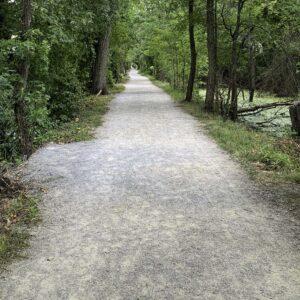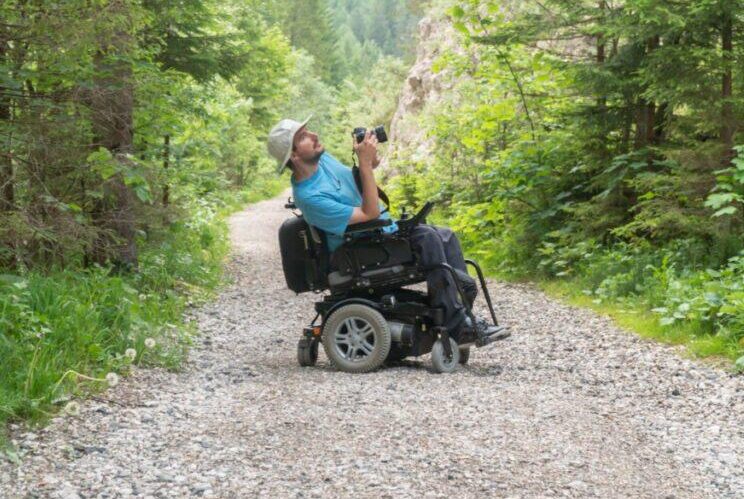Q: I’m an outdoor enthusiast and enjoy hiking wheelchair-accessible trails with my family, including our quadriplegic son, near my home in Western Pennsylvania. I volunteer for a local trail club and am even hosting a fundraiser for them.
They just laid a thick amount of limestone along the trail, making it impossible for any wheelchair user to get through. There go our family hiking plans. Grrrrr!
I want to start a dialog with them so that they won’t wreck future hiking seasons. Are there any requirements or guidelines I can share with them about how to build accessible hiking trails?
I am a United Spinal member from Western Pennsylvania.
Sincerely,
Not-So-Happy Hiker
*****

Accessible trails must have a firm, stable surface that is at least 36 inches wide. Any loose fill or deep gravel will not comply.
A: There are quite a few resources on accessible trail surfacing available. But it sounds like the trail in question isn’t even trying to be accessible.
Accessible trails must have a firm, stable surface that is at least 36 inches wide. Any loose fill or deep gravel will not comply.
If the trail is required to be accessible, it must provide a surface usable by a person who uses a wheelchair or other mobility device. That means the walking surface must be firm, stable, and at least 36 inches wide. Any kind of loose fill or deep gravel will not comply. However, compacted natural soils or specially treated and stabilized soils can be compliant and relatively maintenance-free depending on the environment. To some degree, the level of development on the trail will dictate the level of accessibility.
Regarding enforceable standards, trails used for recreational purposes (such as hiking), as opposed to those used for transportation (such as public rights of way and shared use paths), are not specifically addressed by the 2010 DOJ ADA Standards. However, they are addressed by the Architectural Barriers Act Accessibility Standards, issued by the General Services Administration and the Department of Defense (see §F247 and §1017). The ABA Standards are based on the Access Board’s Outdoor Recreation Accessibility Guidelines, which cover outdoor constructed features, including picnic tables and fire rings, trails, camping, and beach access. Currently, these standards apply only on Federal lands, not on private lands or state and local lands, and are enforceable only under the Architectural Barriers Act by way of a complaint to the Access Board.
It is important to note that even though the ABA Standards may not apply to an ADA-covered facility, the ADA requires state and local governments to provide program access and public accommodations to remove barriers. All covered entities are required to maintain accessible features. The ADA’s general provisions prohibiting discrimination will apply even though the trail provider may not have to comply with every little detail of the ABA Standards. When there are no applicable ADA Standards for design, construction, or maintenance, the Department of Justice makes clear that covered entities must still ensure full and equal enjoyment of the programs, services, and facilities offered.
I hope this helps. Let me know if you need more information.
— Marsha Mazz


